Papers by Sonja Jamnicki Hanzer
Sustainability, Jun 4, 2024
Journal of Imaging Science and Technology, Sep 1, 2008
IOCN 2023
This article is an open access article distributed under the terms and conditions of the Creative... more This article is an open access article distributed under the terms and conditions of the Creative Commons Attribution (CC BY
Materials, Apr 19, 2023
This article is an open access article distributed under the terms and conditions of the Creative... more This article is an open access article distributed under the terms and conditions of the Creative Commons Attribution (CC BY
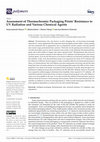
Polymers
Thermochromic inks, also known as color changing inks, are becoming increasingly important for va... more Thermochromic inks, also known as color changing inks, are becoming increasingly important for various applications that range from smart packaging, product labels, security printing, and anti-counterfeit inks to applications such as temperature-sensitive plastics and inks printed onto ceramic mugs, promotional items, and toys. These inks are also gaining more attention as part of textile decorations and can also be found in some artistic works obtained with thermochromic paints, due to their ability to change color when exposed to heat. Thermochromic inks, however, are known to be sensitive materials to the influence of UV radiation, heat fluctuations, and various chemical agents. Given the fact that prints can be found in different environmental conditions during their lifetime, in this work, thermochromic prints were exposed to the action of UV radiation and the influence of different chemical agents in order to simulate different environmental parameters. Hence, two thermochromi...
MATRIB 2005 : zbornik sažetaka = abstracts book, 2005
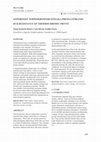
Termokromne boje su temperaturno osjetljivi materijali koji prilikom promjene temperature mijenja... more Termokromne boje su temperaturno osjetljivi materijali koji prilikom promjene temperature mijenjaju svoje obojenje. Ove boje se najčešće primjenjuju na takozvanoj pametnoj ambalaži gdje imaju ulogu temperaturno osjetljivih indikatora. Radi mikroenkapsulacije termokromnih koloranata, otisci ovih boja znatno su osjetljiviji na abraziju od otisaka konvencionalnih tiskarskih boja. Zbog toga smo u ovom radu odlučili procijeniti njihovu otpornost prema otiranju.U eksperimentalnom dijelu rada, tri su offsetne termokromne boje (plava, vinsko crvena i zelena) otisnute na premazanim i nepremazanim papirima, podvrgnute ispitivanju otpornosti prema otiranju sukladno standardu BS 3110. Ovakvom vrstom ispitivanja odredili smo prikladnost tiskovne podloge prema određenoj tiskarskoj boji. Nakon provedbe testa, stupanj otiranja boje utvrdili smo vizualnom procjenom. Također smo odredili i kolorimetrijske promjene nastale na otiscima nakon njihovog izlaganja otiranju. Analizom u okviru ovog istraživa...
Tiskarstvo i dizajn 2019 - Zbornik radova, 2019
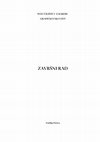
U ovom je zavrsnom radu provedeno ispitivanje otpornosti otisaka offsetnih termokromnih boja prem... more U ovom je zavrsnom radu provedeno ispitivanje otpornosti otisaka offsetnih termokromnih boja prema otiranju. U svrhu pronalaženja optimalne tiskovne podloge za navedene boje, otiskivanje se izvrsilo na razlicitim tiskovnim podlogama. Tako su se dvije offsetne termokromne boje (vinsko crvena i zelena) u laboratorijskim uvjetima tiskale na nekoliko papirnih tiskovnih podloga, koje su se razlikovale u svojstvima i obradi povrsine (premazani i nepremazani papiri / polukartoni). Prije samog otiskivanja, izvrsena su ispitivanja glatkosti koristenih tiskovnih podloga kako bi se mogao odrediti eventualan utjecaj tiskovne podloge na stupanj otiranja boje. Nakon otiskivanja i susenja, otisci su izloženi laboratorijskom otiranju (engl. Rub test) pod razlicitim, definiranim pritiscima. Otiskivanje je vrseno na uređaju Prufbau Multipurpose Printability Testing System, dok je za test otiranja koristen tribometar Hanatek RT4 Rub and Abrasion tester. Na otiscima termokromnih boja izvrsena su kolori...

✉ Corresponding author: Branka Lozo, blozo@grf.hr The aim of the study was to analyse the possibi... more ✉ Corresponding author: Branka Lozo, blozo@grf.hr The aim of the study was to analyse the possibility of using natural zeolite clinoptilolite as partial substitute of paper filler in order to improve the UV stability of thermochromic ink. Natural zeolite tuff was added to calcium carbonate in mass proportions of 0%, 20% and 60% and laboratory handsheets were prepared with 20% filler addition to fibre paperstock. The printability tester IGT A2 was used in the preparation of thermochromic prints on laboratory handsheets, which were exposed to the process of UV radiation in a Solarbox 1500e aging chamber (CO.FO.ME.GRA) for various time intervals during 40 hours. The measurements of the CIELab values (L*, a*, b* and C*) have shown changes as a function of accelerated aging time, which are very significant already after 1 hour. The smallest changes were obtained in the case of paper samples with 12% clinoptilolite (20% zeolite tuff addition). It was concluded that small proportions up to...
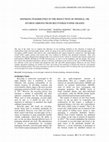
The aim of the study was to compare the efficiency of two deinking methods in the reduction of mi... more The aim of the study was to compare the efficiency of two deinking methods in the reduction of mineral oil hydrocarbons from recovered paper grades, which are going to be used in production of food packaging paper. Old newspapers (ONP) printed with cold-set inks, supercalendered (SC) papers printed by rotogravure, and lightweight coated (LWC) papers printed with heatset inks were deinked by flotation and adsorption treatments. After each treatment, filter pads obtained from deinked pulps were analysed on the content of saturated and aromatic mineral oil hydrocarbons (MOSH, MOAH) by GC/FID measurements, as well as on the brightness and ash content. The results have shown that adsorption deinking is almost as efficient as flotation in ink removal in the case of ONP deinking, but less effective in the case of heatset and rotogravure inks (SC and LWC printed papers). However, for most tested samples adsorption deinking was found to be more successful in the reduction of mineral oils tha...

The suitability of recycled paper packaging materials for direct food contact applications is a m... more The suitability of recycled paper packaging materials for direct food contact applications is a major area of investigation. The evaluation of food contact suitability was conducted on two commercially produced recycled papers. The white top testliner and the fluting paper, commonly used as integral parts of corrugated container, were tested. Selected papers were also submitted to additional chemical cleaning, which was obtained by means of laboratory deinking flotation. The aim of this experiment was to evaluate a possible decrease in the amount of chemical contaminants in the deinked pulp after laboratory deinking flotation had been conducted. Two original paper samples as well as their corresponding deinked pulp handsheets were checked for the presence of potentially harmful substances that are usually found as residues of recycling procedures. Food contact analyses comprised determination of heavy metals (Cd, Pb, Hg), primary aromatic amines, diisopropylnaphthalenes (DIPN), phth...
This brochure is intended for packaging manufacturers and is designed to give a short overview of... more This brochure is intended for packaging manufacturers and is designed to give a short overview of the present end-of-life (EOL) solutions for bio-based packaging materials. It addresses current standardization, legislation and socio-economic aspects related to renewable packaging in Europe. It provides insight into the performance of the existing EOL technology in relation to bio-based packaging materials and emphasizes the main challenges that still need to be tackled in order to achieve efficient recovery of bio-based materials.

In this study, recovered paper samples consisting of three print and substrate combinations, were... more In this study, recovered paper samples consisting of three print and substrate combinations, were prepared and treated in laboratory conditions by means of two different deinking methods. Recovered papers consisting of old newspapers (ONP) printed with coldset inks, rotogravure printed supercalendered (SC) papers and light weight coated (LWC) papers printed with heatset inks were submitted to a separate flotation deinking and adsorption deinking treatments. After each conducted deinking treatment, the filter pads were prepared from corresponding deinked pulps and were subsequently analyzed on the content of saturated and aromatic mineral oil hydrocarbons (MOSH, MOAH) by GC/FID measurements. Aim of the investigation was to compare the effectiveness of two different deinking methods (adsorption deinking and flotation deinking) in reduction of mineral oil hydrocarbons from the defined recovered paper grades. For most of the tested samples adsorption deinking was found to be more succes...

Reproduction of colors in three-dimensional ink-jet printing (3DP), dependant on the materials us... more Reproduction of colors in three-dimensional ink-jet printing (3DP), dependant on the materials used, was studied. A lot of different types of rapid prototyping techniques exist ; some of them are based on the standard ink-jet printing. 3D printing is classified as additive, powder-based rapid prototyping technique. The binder is ink-jetted onto the successive layers of powder. The chemical interaction of the binder and the owder results in solidification of material and thus he three dimensional prints are produced. In recent years, the opportunity of color 3D prints has been made possible. In a 3D color printer, the colorants make part of the binder solution. The system uses four printheads – CMY and clear binder and reproduces color on the basis of 2D desktop ink-jet printer. Considering 3D prints have much more rough surface compared to conventional ink-jet prints, the instrument-related, aspects of color measurements were discussed. Spherical geometry spectrophotometer was used....

The possibility of using recovered office paper grades as alternative raw material in the manufac... more The possibility of using recovered office paper grades as alternative raw material in the manufacture of white top plies of food packaging linerboards is a major area of investigation. Three different types of office print-outs had been submitted to a chemical deinking flotation and the handsheets formed after each deinking flotation trial were analyzed on the presence of residual chemical contaminants: heavy metals (Cd, Pb, Hg), primary aromatic amines, phthalates, diisopropylnaphthalenes (DIPN) and polychlorinated biphenyls (PCB). Moreover, bleed fastness of fluorescent whitened agents (FWA) was determined as well. The conducted research showed that of all analyzed contaminants in the deinked pulp handsheets, only phthalates were detected, in concentrations from 5.3 up to 12.5 mg/kg of paper. However, according to present toxicological assessments, these amounts of detected phthalates do not impose a health risk to the consumers. Research thus demonstrated that all tested papers r...

U zadnjih nekoliko godina, fleksografski tisak postaje sve zastupljenija a time i konkurentnija t... more U zadnjih nekoliko godina, fleksografski tisak postaje sve zastupljenija a time i konkurentnija tehnika tiska u proizvodnji ambalaže. Ova tehnika visokog tiska sa savitljivom (fleksibilnom) tiskovnom formom daje dobre rezultate u tisku na kartonskoj, polimernoj i metalnoj ambalaži te danas sve vise konkurira bakrotisku cak i u tisku zahtjevnijih radova. Fleksografski tisak koristi tekuce boje male viskoznosti koje se s obzirom na kratak put prijenosa boje od bojanika do tiskovne podloge moraju brzo osusiti. Te kompleksne disperzije obicno sadrže 25-35% krute tvari koju cine pigmenti dispergirani u polimernoj smoli. Otapala koja otapaju smolu u ovakvim sustavima temelje se na vodi ili su organskog porijekla. Otapalo inicira brzo susenje otisnutog sloja boje uslijed kojeg polimerna smola formira film na otisku i veže pigment za tiskovnu podlogu. Svaki kvalitetan tisak, a posebno onaj koji se odnosi na ambalažu, podrazumijeva otiske koji trebaju imati zadovoljavajucu otpornost na otira...




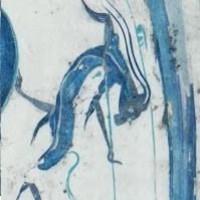






Uploads
Papers by Sonja Jamnicki Hanzer